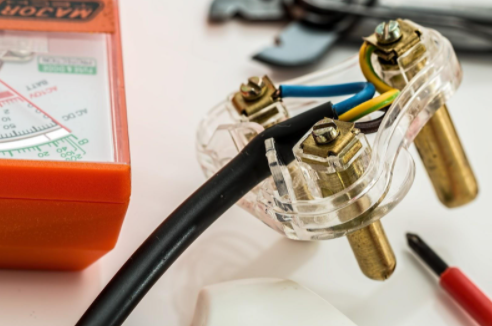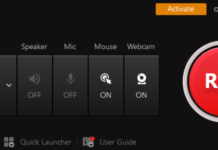Electrical appliances are among the most widely used consumer goods in the world. Everyone uses electrical items, such as refrigerators and air conditioners, for work or home.
However, powering these gadgets can be complicated if you don’t know which connectors and plugs to use. It’s much worse if you’re traveling abroad and discover that all of your plugs are incompatible with the sockets. As a result, understanding electrical standards and connectors, both at home and overseas, can assist you in keeping your gadgets safe and avoiding electrical hazards.
In the United States, people who need to operate around electrical equipment sometimes inquire what a NEMA 5-15 connector is. Look no further if you’ve ever wondered what these connectors are or how they work.
This article brings you everything you need to know about the NEMA 5015r and how it works.
Electrical appliances are among the most widely used consumer goods in the world. Everyone uses electrical items, such as refrigerators and air conditioners, for work or home.
However, powering these gadgets can be complicated if you don’t know which connectors and plugs to use. It’s much worse if you’re traveling abroad and discover that all of your plugs are incompatible with the sockets. As a result, understanding electrical standards and connectors, both at home and overseas, can assist you in keeping your gadgets safe and avoiding electrical hazards.
In the United States, people who need to operate around electrical equipment sometimes inquire what a NEMA 5-15 connector is. Look no further if you’ve ever wondered what these connectors are or how they work.
This article brings you everything you need to know about the NEMA 5015r and how it works.
What is a NEMA 5-15 Connector?
You must first learn the concept of NEMA before you can comprehend the NEMA 5-15r and its function. The National Electrical Manufacturers Association is what it’s called. This is the organization in charge of North American electrical standards.
They attempt to ensure that electrical manufacturers and users are safe and consistent. As a result, a system has been established to standardize the rating and description of sockets and plugs used throughout the country.
As a result, the NEMA connector is a mechanism for connecting electrical equipment to power supplies. These systems can deliver either direct current (DC) or alternating current (AC) electricity (AC). On the other hand, alternating current is the standard current that runs through most houses, buildings, workplaces, and stores’ electrical systems. Power generated by batteries is an outstanding example of direct current.
Several additional types of connections are available internationally, notwithstanding the predominance of two or three-prong plugs in the United States. The amperage and voltage they employ differ. However, the NEMA standards apply to electrical supplies, devices, and producers
NEMA Connector – Types
In Canada and the United States, the NEMA 5-15 receptacle is the most common electrical receptacle. It’s a two-pole, three-wire grounding receptacle that can handle up to 15 amps and 125 volts. Green for Ground and white for Neutral are the traditional wire colors. The color of the Live wire depends on the electrical plan of the building; the most typical colors for the live are black and red.
There are two types of NEMA connectors: locking and non-locking. The plugs that work with these two are what can distinguish them. Plugs on locking connectors have curved blades. After inserting the plug into the connector, you turn it to lock it in place.
These connectors are typically encountered in industrial and commercial contexts. Midget or miniature locking NEMA connectors, indicated by “ML,” are also available. As a result, the NEMA 5-15 connector can be locked or non-locked.
Ungrounded vs. Grounded
Your NEMA connector can be grounded or ungrounded, aside from the locking system. Grounded means that surplus power is directed away from your appliances and into the ground. This wiring reduces the risk of electric shock or overload caused by power surges.
Plugs that are not grounded have two pins, while grounded plugs have three. The ground pin is primarily positioned above the two to prevent metal objects from coming into contact with a hotline.
Locking vs. Non-Locking
Let’s also consider the other difference between the NEMA connectors in the American market.
Locking
Connectors with locking connectors fit tightly together and stay connected. When put into the receptacle, locking connector plugs have curved blades that can twist.
Locking connections are primarily used in commercial and industrial settings. The letters “ML” stand for miniature or midget locking connectors. They’re employed in places where larger locking connectors won’t fit. They are available in three different varieties.
- 125 V rating, two-pole, ungrounded
- 125 V rating, two-pole, grounded
- 125/250 V rating, three-pole, ungrounded
The addition of an “L” before the series number distinguishes locking connectors from regular NEMA connectors, as in NEMA L5.
Non-Locking
NEMA 1 and NEMA 5 are the most popular non-locking connectors. They have two blades, one without a ground and the other with a ground. Builders are obligated to install receptacles with NEMA 5 ground plugs for some years.
The plug configuration, which comprises the number of poles, wires, and voltage, is the first number in the NEMA standards system. Two poles, three-wire, four-pole five-wire, and so on are examples of grounding types. Because they don’t need a wire for grounding, non-grounded connectors have the same number of wires as poles.
The amp rating is the second digit in the code, followed by “P” for the plug and “R” for the receptacle. A NEMA 5-15R, for example, is a 15 amp, 125 V, two-pole, three-wire receptacle.
The ground pin is usually situated up to prevent metal objects from coming into touch with the hotline. Falling objects cannot strike the neutral and conducting connections because the grounding pin is up.
NEMA 5-15 – How it Works
The NEMA 5-15 can handle voltages of up to 125 volts. The voltage rating and configuration are indicated by the number “5”. If you want to utilize a US plug at 250 volts, you’ll need to use a different configuration than the standard NEMA 5-15, such as the NEMA 6-16.
Countries like the Philippines, which use NEMA 5-15 at 220VAC, have yet to standardize their power standards. This, however, necessitates extreme caution. As you’ll see, the connector’s complete name refers to the plug and socket pattern’s rating. As a result, each number and alphabet has a bearing on how the connector works.
You can deduce the voltage from the first number:
- The number “1” denotes a 125-volt, Class II rating (ungrounded)
- “5” means a 125 volt, Class I rating (grounded)
- The number “6” implies a 250-volt, Class I rating (grounded)
- The number represents the amperage rating. It usually varies between 15 and 60 amps.
You’ll also notice two letters, one in front of the numbers and the other at the conclusion. The one at the end indicates whether the cord is a plug or a receptacle.
Conclusion
There are standards in place that dictate which plugs work with which connectors. If you’re coming to the United States from a nation with a different set of connectors, you’ll require plug adapters and devices that work with the typical 15 to 60 amp ratings and voltages of 125 to 600 volts. The same is true while traveling internationally to avoid any electrical hazards.
































